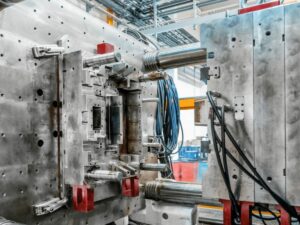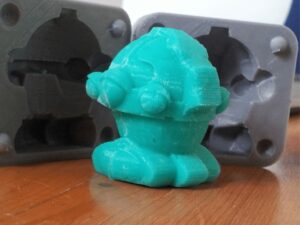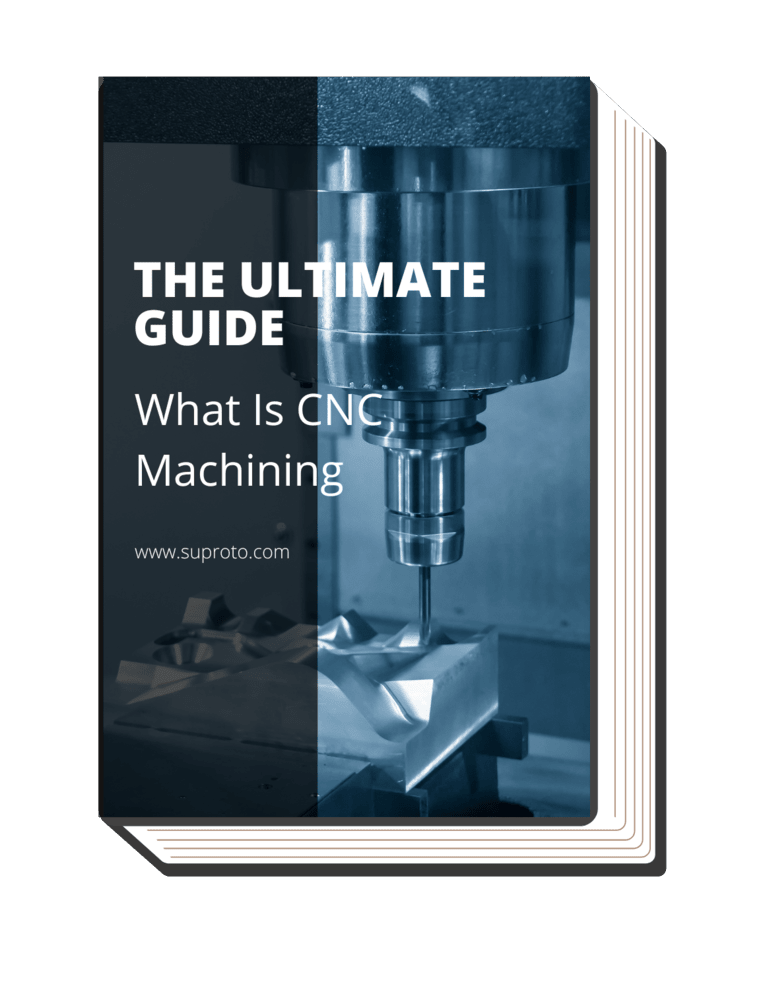1. Understanding Plastic Injection Molding
Plastic injection molding is a widely used technique for creating precise, high-quality parts across numerous industries. The process, which involves injecting, cooling, and ejecting molten plastic in a mold, is esteemed for its scalability and capacity to form intricate shapes. Let’s delve into this captivating world of plastic injection molding below:
The Basics of Injection Molding
At the heart of the plastics industry lies the sophisticated process of plastic injection molding. This method entails injecting molten plastic into a meticulously crafted mold, which then cools and unveils a flawlessly shaped, solid component. When considering mass production, envision the remarkable ability to manufacture thousands of meticulously identical, high-quality parts on a daily basis.
The Role of Molds
Molds, predominantly fashioned from durable metals such as steel or aluminum, serve as the defining structure for the injected plastic, dictating its final form. The precision embedded in the creation of these molds is paramount, as it directly correlates to the quality of the end product. Let it be your mantra: the excellence of your product hinges upon the precision of the mold behind its creation.
Types of Plastics Used
The sphere of injection molding embraces a wide array of thermoplastics, encompassing materials like polyethylene, polystyrene, and polyvinyl chloride, amongst others. Here’s the interesting part. Each of these plastics offers unique characteristics and properties, influencing their suitability for various applications. The selection of the plastic type is not arbitrary, but contingent upon the specific requirements of the product.
2. Advantages of Plastic Injection Molding
What makes plastic injection molding a game-changer in the manufacturing industry? This process not only allows for the mass production of high-precision parts but also supports a wide range of materials and designs. It all comes down to its numerous advantages which are written below:
High Efficiency and Productivity
Unsurprisingly, plastic injection molding is a remarkably rapid process, serving as a catalyst for high production output. Now, this is important. This rapid pace not only streamlines manufacturing but also bestows a significant competitive advantage to businesses targeting mass production. It’s like a secret weapon, propelling them leaps and bounds ahead in the fiercely competitive manufacturing arena.
Cost-Effectiveness
Indeed, due to its high efficiency and automation capabilities, plastic injection molding is a cost-effective choice, particularly for large-scale production. This method reduces labor costs and waste. According to Jaycon Systems, injection molding is one of the least expensive options to choose. Offering an affordable solution for producing bulk medical devices, components, and parts required by hospitals and patients.
Versatility in Design
Injection molding fosters the creation of complex parts, enhancing design versatility and catering to industries like automotive and medical. As per a report by 3D Hubs, Injection molding offers high repeatability and good design flexibility. These qualities make it an unrivaled solution for manufacturers seeking to balance complexity, precision, and large-scale production.
Enhanced Quality and Consistency
Plastic injection molding is a remarkably fast process that enables high production output. Now, let’s consider the competitive advantage this speed imparts to businesses focused on mass production. But that’s not all. You don’t want to miss this next part. Injection molding is a champion of repeatability, ensuring each part is an identical twin to the last.
Material Options
Various types of plastics, with the option to blend different materials, offer an extensive spectrum of physical and aesthetic properties for the finished product. This versatility is crucial for product endurance, ensuring optimal performance and durability. For instance, by selecting the appropriate plastic blend, a product can achieve exceptional strength and heat resistance, enabling it to withstand demanding circumstances.
3. Injection Molding Process
The injection molding process, a crucial manufacturing technique, produces precise and intricate plastic parts by melting, injecting, cooling, and ejecting plastic within a mold. Here are the steps explaining each stage of the injection molding process:
Step #1 Clamping
The injection molding process commences with the clamping of a two-part mold, ensuring a secure closure that can withstand the immense pressure applied during the injection. This robust clamping mechanism, a hallmark of Suprotos’ commitment to excellence, guarantees the integrity of the mold structure. By fortifying against deformities or imperfections, we safeguard the production of high-quality final products.
Step#2 Injection
When it comes to plastic injection molding, molten plastic is injected into the mold under high pressure. And here’s why that’s important: the precise design of the mold plays a critical role. For instance, the injection must be skillfully targeted to ensure an even and uniform filling of the mold. This meticulous attention to detail guarantees that each part produced attains the desired dimensions and quality.
Step #3 Cooling
The injected plastic is allowed to cool and solidify within the mold. Now, this is important—this stage wields substantial influence over the properties and overall quality of the part. Amazing, isn’t it? However, it is crucial to keep in mind that proper cooling is absolutely vital, as rushing this step can give rise to defects that jeopardize the integrity of the final product.
Step#4 Ejection
As a CNC Machining manufacturer, I can almost hear you thinking, “How awesome is that?” Yes, the final solidified part is indeed ejected from the mold, marking the completion of the process. It’s truly a sight to behold, witnessing your product emerge, ready and perfect, piece after piece. This seamless repetition allows for efficient production and sets the stage for a continuous manufacturing cycle.
4. Applications of Plastic Injection Molding
Plastic injection molding finds applications in various industries, delivering precision and efficiency. From automotive to electronics and healthcare, it produces high-quality plastic parts at scale. What is written below are the following applications of plastic injection molding:
Automotive Industry
This dynamic manufacturing process serves as the backbone for producing a wide range of automotive parts, spanning from interior components that enhance comfort and aesthetics to vital under-the-hood parts that ensure optimal performance and safety. In the ever-evolving automotive industry, Suprotos leads the way, harnessing plastic injection molding to drive innovation and shape its future.
Consumer Electronics
Plastic injection molding plays a vital role in the production of components for consumer electronics, ranging from cell phone cases to television parts. You won’t believe what we discovered. The high precision achieved through injection molding enables the creation of intricate parts that are essential for the seamless operation and aesthetic appeal of electronic devices.
Medical Devices
Plastic injection molding proves indispensable in the medical industry, allowing for the production of a wide array of medical devices and components. With the ability to meet strict tolerance requirements, injection molding offers unmatched reliability in ensuring the consistency and accuracy of medical parts. Injection molding is a lifeline in the medical field, producing precise surgical instruments and critical implantable devices.
Packaging Industry
From food and beverage containers to cosmetic packaging, plastic injection molding is undeniably pivotal in the packaging industry. The process’s ability to produce large quantities quickly and cost-effectively is a boon to this industry. Here’s what we found instead: By leveraging the efficiency of plastic injection molding, packaging businesses can meet the high demand for their products while maintaining competitive pricing.
Toys and Games
Injection molding is the driving force behind the creation of countless toys and games that have brought joy to our childhoods and continue to captivate us today. This transformative process empowers manufacturers to mass-produce these beloved items in an economical and efficient manner. Injection molding empowers businesses to meet the demand for entertainment products, bringing joy and excitement to all ages.
5. Common Defects in Plastic Injection Molding
Plastic injection molding can encounter common defects that affect the quality of the final product. Understanding these challenges helps implement preventive measures. Here, we present the key milestones that have shaped its extraordinary journey:
Sink Marks
Sink marks, which are depressions that can form when the mold’s surface cools faster than its interior, are a common occurrence in injection molding. However, with the right expertise and understanding, these imperfections can be effectively minimized. By employing optimal cooling techniques, and fine-tuning process parameters, manufacturers can mitigate sink marks and achieve higher-quality finished products.
Warpage
Warpage, a common issue in injection molding, is the result of varying cooling rates across different sections of a molded part. As these sections cool at different speeds, internal stress builds up, leading to the unwanted distortion of the final product. It is crucial to carefully manage cooling conditions, mold design, and material selection to minimize warpage and ensure the production of high-quality, dimensionally stable parts.
Flashing
Flashing happens when excess plastic seeps out of the mold cavity, resulting in thin extensions on the finished product. But there’s a catch. This issue typically arises when the mold is worn or damaged, compromising the precision and quality of the final parts. It’s crucial to address this concern promptly to ensure that your products meet the highest standards and deliver to customer expectations.
Short Shots
And this is where people run into trouble: short shots. It happens when the molten plastic fails to fill the entire mold cavity, resulting in an incomplete part. This issue can be attributed to improper settings or inadequate material supply, causing frustration and delays in the production process. To ensure successful injection molding, attention to detail and precise control over settings and material supply is paramount.
Burn Marks
Burn marks, usually brown or black discolorations, can mar the surface of a molded part, they are typically caused by overheating or trapped air during the injection molding process. These unsightly marks not only affect aesthetics but can also indicate potential flaws in the production process. To combat burn marks, control and optimize injection molding parameters for precise temperature and air venting.
6. Future Trends in Plastic Injection Molding
As technology evolves, so does plastic injection molding. Future trends aim to boost efficiency, lower environmental impact, and cater to the growing need for intricate, precise parts. These dynamic changes promise a transformative future for the industry. Below are the upcoming trends in plastic injection molding:
Advanced Materials
As we forge ahead toward a more sustainable future, the industry is witnessing an upsurge in the development of advanced materials, notably bio-based plastics. This emerging trend holds tremendous promise, as it aligns with our collective commitment to environmental sustainability. By harnessing innovative materials, we drive greener and more eco-conscious manufacturing practices.
Automation and Robotics
In the realm of plastic injection molding, automation, and robotics play an ever-expanding role in boosting efficiency and ensuring consistent results. You won’t believe what we discovered… The incorporation of robotics into the process revolutionizes efficiency, reducing production time and enhancing overall productivity. Technology empowers businesses to meet industry demands with precision.
The following table highlights the diverse benefits of incorporating automation and robotics into plastic injection molding, including enhanced efficiency, consistency, flexibility, safety, and cost savings.
| Aspect |
Benefits |
| Efficiency |
1. Reduces production time.
2. Increases overall productivity.
3. Minimizes human error.
4. Optimizes cycle times.
5. Enhances process repeatability.
6. Improves machine utilization.
7. Streamlines workflow.
8. Enables continuous operation.
9. Reduces downtime.
10. Increases output volume.
|
| Consistency |
1. Ensures consistent part quality.
2. Enhances dimensional accuracy.
3. Improves surface finish.
4. Reduces scrap and waste.
5. Mitigates variation in part dimensions.
6. Provides uniform cooling and heating.
7. Enhances mold filling control.
8. Enables precise control of process parameters.
9. Facilitates real-time monitoring and adjustments.
|
| Flexibility |
1. Allows quick mold changeovers.
2. Facilitates production of complex geometries.
3. Supports customization and personalized production.
4. Enables easy integration with other automated systems.
5. Enhances adaptability to changing production demands.
6. Supports multi-cavity molds.
7. Enables efficient production of small batch sizes.
8. Enables high-volume production.
9. Enhances part traceability.
|
| Safety |
1. Reduces operator exposure to hazardous environments.
2. Minimizes physical strain on operators.
3. Provides automated safety features.
4. Enhances workplace safety.
5. Reduces the risk of accidents.
6. Prevents material spills and leaks.
7. Enables remote monitoring and control.
8. Improves ergonomics and reduces repetitive tasks.
|
| Cost Savings |
1. Reduces labor costs and dependency.
2. Minimizes material waste.
3. Optimizes energy consumption.
4. Decreases maintenance and repair costs.
5. Reduces rework and rejects.
6. Enhances overall equipment effectiveness (OEE).
7. Increases return on investment (ROI).
8. Improves resource allocation.
|
Sustainable Practices
As the world embraces environmental consciousness, sustainability practices in plastic injection molding are gaining prominence. Here’s what we found instead… Recycling and energy efficiency initiatives are becoming increasingly prevalent. Some facilities are adopting closed-loop water cooling systems, effectively reducing water usage and minimizing environmental impact.
7. 5 Tips for Successful Plastic Injection Molding
Successful plastic injection molding, an efficient and versatile process, depends on meticulous planning, accurate material selection, and precise execution. This leads to cost-effective, high-quality parts and improved productivity. Below, we will explore some key advice for securing this success:
#1 Design Considerations
Proper design is absolutely crucial for successful injection molding. To achieve optimal results, it’s imperative to consider critical design elements such as wall thickness, draft angles, and gate locations. These factors directly impact the manufacturability and functionality of the final product. As an entrepreneur, understanding these design elements can save you time and money in the long run.
#2 Material Selection
When selecting the material for your product, it’s essential to consider various factors that can significantly impact its performance and aesthetics. For instance, depending on the specific application, a material with high tensile strength may be required to withstand heavy loads or impact. Additionally, flexibility plays a crucial role for certain products, enabling them to withstand movement without succumbing to breakage.
#3 Proper Machine Setup
Machine setup holds the key to the quality of your finished product. Here’s the main issue with that. Without proper temperature and pressure settings, as well as regular machine maintenance, the performance and consistency of the final product can be compromised. It’s imperative to establish the ideal conditions and diligently maintain the machine to optimize the injection molding process.
#4 Optimal Process Parameters
Finding the optimal process parameters, including injection speed and pressure, is crucial for optimizing both the efficiency and quality of your production process. Setting these parameters too low can result in inadequate material flow and incomplete parts, while setting them too high can cause issues like flashes, sink marks, or even damage to the mold. It’s a delicate balance that requires meticulous fine-tuning.
#5 Quality Control Measures
Implementing rigorous quality control measures, including , plays a crucial role in early detection and rectification of defects or issues within the production process. By closely monitoring every stage of the injection molding process, ensure that any deviations from desired specifications are promptly identified and addressed. This proactive approach ensures quality and minimizes waste, boosting customer satisfaction.
Dive Deeper Into Our Resources
Looking for more diverse product options? Browse through our handpicked selections:
For some insightful reads, we’ve curated a list of recommended articles just for you:
Still haven’t found what you’re looking for? Don’t hesitate to contact us. We’re available to assist and guide you.
Conclusion
In conclusion, plastic injection molding is an efficient, versatile, and widespread method for producing high-quality plastic parts. It’s used in various industries, from automotive to consumer electronics, and is driven by advancements in materials, automation, and sustainability. To ensure the successful implementation of the injection molding process, understanding its basics, common defects, and essential tips is crucial.
Now is the time to make your mark and propel your business forward with the incredible capabilities of plastic injection molding. Let Suprotos be your trusted partner on this journey toward excellence. Here’s how it works. Contact us today and let’s reshape the future together.






